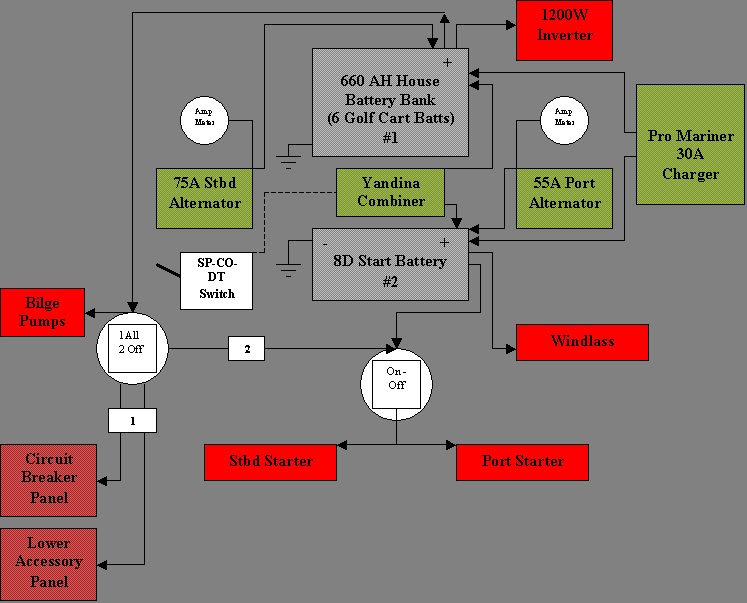All I want to do is charge the house bank more quickly while underway.
That's all we wanted to do, too. But the way we do it (or did it-- we don't need to anymore) was in the true sense of the expression KISS.
The stock Motorola alternators on our FL120s normally charge only the battery associated with each engine. So the port alternator charges the port battery, starboard the starboard. This is with the battery selector switch in either 1 or 2, which determines which of the 8Ds (now golf cart banks) will fill the role of house battery.
When I mentioned to the proprietor of the marine electrical shop we use that it seemed a shame that only one alternator was charging the house 8D while the other one had the easy task of recharging the start 8D after which it was just along for the ride he checked the boat's wiring and determined that if we put the battery selector in the "All" position this would combine the alternator outputs so both of them would charge both batteries.
In fact, he said, this explained the mystery of why one of our alternators has a smaller drive pulley than the other one. The faster-spinning alternator would be the dominant one and thus prevent any conflict between the combined alternator outputs. (I don't understand this; I'm just repeating what he said.)
So from then on we would put the battery selector switch in "All" prior to starting the engines. The combined output of both alternators would recharge both batteries much faster and if we used heavy-load items like the anchor windlass or microwave on the inverter the batteries would not be drawn down as far and would be recharged much faster. When we shut off the engines the first thing we'd do is move the battery selector to "1" to designate it as the house battery.
We no longer need to do this (although we still could) but for years this simple process of using the battery selector switch as a charging "combiner" worked beautifully.
The activities of the alternators could be observed on the ammeters. After startup, particularly after a day or so in an anchorage, both ammeters would show a high rate of charge where before only the meter on the alternator charging the house battery would show this high rate.
Then as our run progressed both ammeter indications would slowly come down together as the batteries were charged. Finally, when the batteries were fully charged, the slower-turning alternator would drop to its lowest charge stage while the faster turning alternator continued to carry the house load of electronics, refrigerator, lights, etc.
Very simple but very effective procedure.


